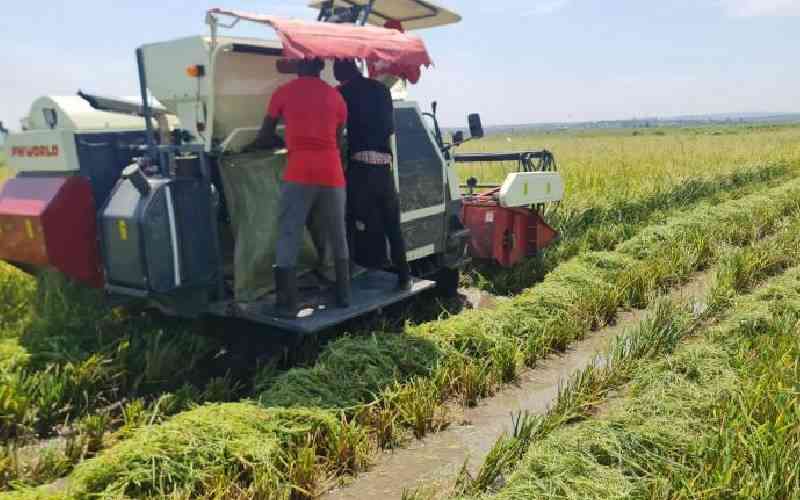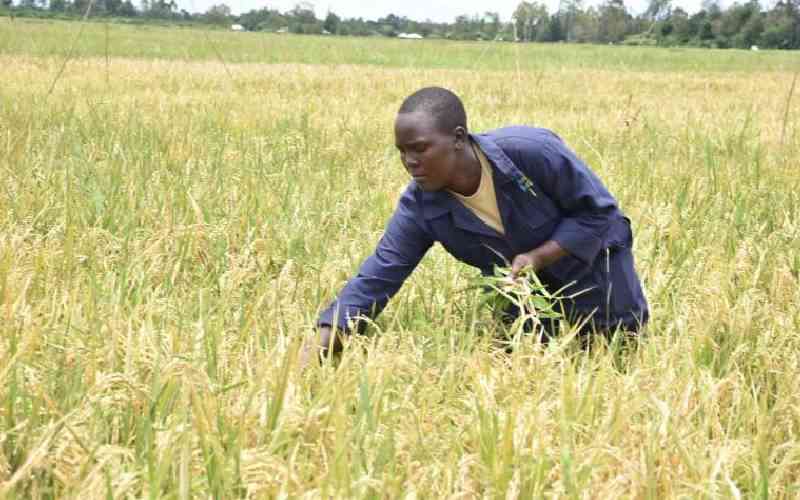Over the last few weeks passion fruit farmers have been asking questions about their crop. Why are the flowers of my crop falling over? Why are the leaves turning yellow and crinkling? Why are my customers complaining that my passion fruits have no juice? Today I will explain these common problems in the passion fruit orchard.
In some instances, the passion fruit vines would flower and fail to set fruits. Several factors are attributed to this, the most obvious being lack of pollination. Pollination is usually carried out by bees. In their absence, pollination is limited. If this is the case, you need to pollinate the flowers manually. Using a soft brush, get the pollen from the yellow pollen sacs and transfer it to the centre of the flower.
Bees’ activities could be hindered by too high or too low temperatures or too much rain. Extended periods of cloudy weather, on the other hand, can cause flower drop, regardless of pollination problems. Dropping of flowers prematurely may also occur due to poor plant nutrition, for instance boron deficiency.
Dropping of fruits
Dropping of the fruits off the vines could be as a result of fungal infection, fruit fly or severe mite damage. Irregular watering could be another cause. Insect pests such as passion fruit vine hopper can cause fruits to drop. The other common reason why passion fruit drop their fruits is when they lack trace elements; the plant does not have the strength to support fruit production so it drops them to conserve energy for the main plant. Supplement the trace elements by use of foliar feed.
Yellowing of leaves could be an indicator of woodiness virus. Deficiency of nutrients such as magnesium and nitrogen could also cause the leaves to turn yellow. The vines turning yellow due to nutrient deficiency manifests itself differently depending on the stage of the leaves’ growth. For instance, if the new leaves are having yellow veins, most times it is due to a deficiency in sulphur or copper.
Fruits infected with woodiness virus are usually small and deformed with thick, hard rind and small pulp cavity. This disease is spread by aphids. Spray your crop with insecticides to control the aphids.
Shriveling of passion fruits is another common problem. It is normal for passion fruits to shrivel, especially after dropping on the ground when mature. But if this happens earlier, it could be triggered by fruit fly damage, sucking bug damage, poor pollination, boron deficiency or inadequate irrigation when a heavy crop is set. To prevent this, ensure you give your vines appropriate nutrients for optimum and vigorous growth while watching out for pests and diseases.
Spots on both fruits and leaves is another common problem. This could be due to brown spot disease. This fungal disease affects the leaves, stems and fruit. The notable symptoms on leaves include small brown spots appearing first. On the fruit, spots first appear as pricks, which enlarge into sunken circular lesions with brown midpoints. With time, the affected area becomes wrinkled and the fruits shrivel and drop.
If your passion fruit lacks the pulp (juice) it could be because the crop did not receive sufficient water during its growth or due to nutrient deficiency. During hot months it is recommended to water an area of two square metres around the base of the vine on a daily basis where possible. You don’t need to soak the ground, just make it moist.
Bumpy or malformed fruits happen due to many factors. First, it could be due to passion fruit woodiness virus. This is more so if the leaves are yellow and mottled. Once you notice these symptoms in your orchard, it’s better to get rid of the affected plants and spray against aphids. Boron deficiency could also be another cause. Damage by fruit fly also results in bumpy and malformed fruits.
- The writer is an expert on agricultural solutions and sustainable agriculture.
[email protected]
 The Standard Group Plc is a
multi-media organization with investments in media platforms spanning newspaper
print operations, television, radio broadcasting, digital and online services. The
Standard Group is recognized as a leading multi-media house in Kenya with a key
influence in matters of national and international interest.
The Standard Group Plc is a
multi-media organization with investments in media platforms spanning newspaper
print operations, television, radio broadcasting, digital and online services. The
Standard Group is recognized as a leading multi-media house in Kenya with a key
influence in matters of national and international interest.
 The Standard Group Plc is a
multi-media organization with investments in media platforms spanning newspaper
print operations, television, radio broadcasting, digital and online services. The
Standard Group is recognized as a leading multi-media house in Kenya with a key
influence in matters of national and international interest.
The Standard Group Plc is a
multi-media organization with investments in media platforms spanning newspaper
print operations, television, radio broadcasting, digital and online services. The
Standard Group is recognized as a leading multi-media house in Kenya with a key
influence in matters of national and international interest.







